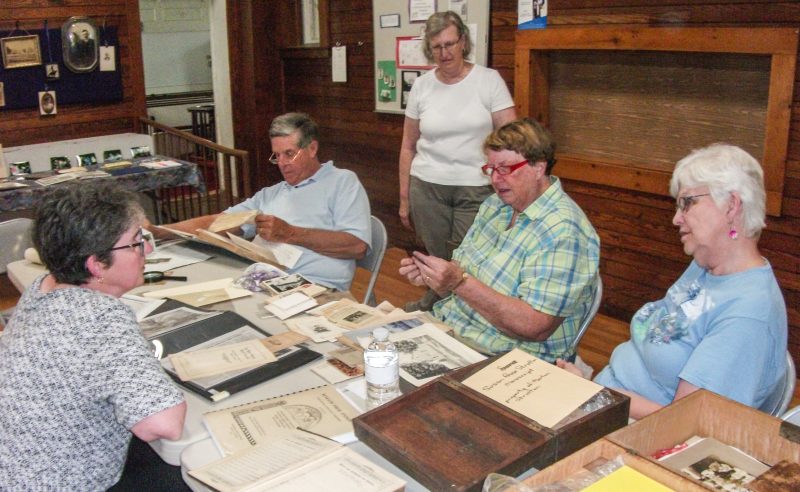
Maybe it’s natural as we get older be more interested in preserving things. When I was younger, I don’t recall being interested in preserving history in the way that I am now. Especially since becoming pastor of a church with a 200 year time-line, I’ve become very aware of the value of the story that is told by the collection of anecdotes, pictures, records, and objects that are collected over the years. For example, this year as a part of our 200th anniversary celebration at Copper Hill church, we read from the Bible that was printed in 1839, the same year that the church sanctuary was built. I illustrated one sermon with anecdotes of revivals taken from the records of the church and a town history.
This last Wednesday, (August 10, 2016), our 200th anniversary committee sponsored a presentation by Beth Patkus, archivist of the New York Annual Conference of the United Methodist Church. As a part of our celebration, we have discovered numerous old records, pictures, etc. And we are creating more historical material as the celebration proceeds. We have also become very aware of how fragile the material is, and how prone it is to being lost during times between big anniversaries when it might be considered “in the way.”
Ms. Patkus’ presentation was very interesting and I came away with a number of immediate takeaways. I’ll call them “Wisdom for Preserving Things. Here are five.
- Label your pictures. Even the next generation will not know who many of the people are. I have a picture of the congregation of my childhood church from my grandparent’s generation. I would only know one or two people, except for the fact that the picture is accompanied with a labeling chart. But I discovered a picture of a large baptismal class I had at Kirkville that is not labeled and already I am unable to recall names for some of the faces.
- Digital preservation does not necessarily replace physical preservation. This was a new thought for me. As a computer buff, I have come to think digital. But I am also aware that websites get completely redone, computers crash, and Beth informed us that even CDs and DVDs do not last as well as techies originally thought they would. The cloud may help but it is still too new to see how well it will work for long-range storage.
- Use acid-free, lignin free and PH buffered storage folders and boxes. For photo albums with plastic, avoid PVC’s. I had heard of acid-free, but the rest of this information was new to me. I am going to invest in some proper storage materials.
- Choose a good storage spot. This was just common sense, but I know I have lost things because they were not in a good spot. Especially avoid light exposure, high humidity, and potential for water damage. In addition, high temperature is detrimental. When possible, display a copy rather than the original to avoid the long-term light exposure incurred by display.
- Don’t try to fix a torn or damaged artifact yourself. You’re more likely to cause irreversible damage. If the object is truly valuable, a conservator may be able to repair it properly (for a price). We were glad we had followed this advice on a church-related but badly-torn poster one family found that may be 140 years old.